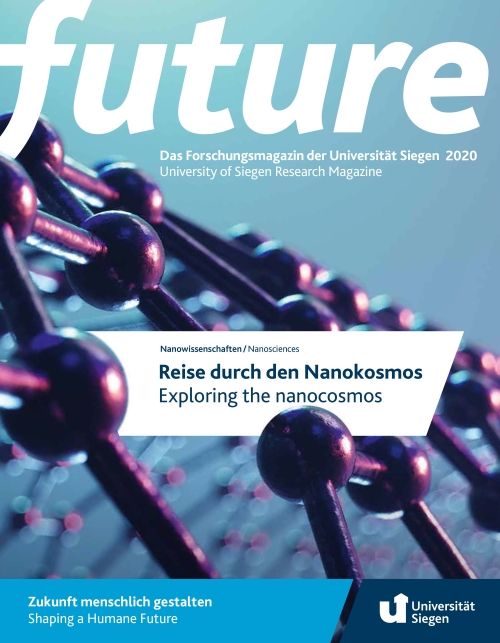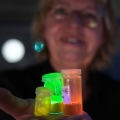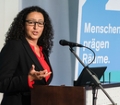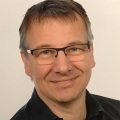Research
News
of
the
University
of
Siegen
 Second
edition
of
University
of
Siegen’s
bilingual
research
magazine
"future"
is
published Second
edition
of
University
of
Siegen’s
bilingual
research
magazine
"future"
is
published
This
magazine
ponders
many
fascinating
questions:
How
harmful
are
nanoparticles
from
sunscreens
to
aquatic
organisms?
Can
DNA
analyses
improve
cancer
detection?
Can
artificial
diamonds
be
developed
into
a
super
capacitor?
The
magazine
also
contains
a
broad
research
mix
from
all
faculties:
Topics
include:
the
power
of
popularity;
plants
lost
in
space;
whether
green
economic
growth
is
possible.
Click
here  to
read
it.
to
read
it.
 Nanoparticles
of
the
future Nanoparticles
of
the
future
Researchers
in
Siegen
have
developed
the
world's
first
afterglow-magnetic
nanoparticles.
The
patented
invention
is
designed
for
various
applications
including
cancer
detection
in
medicine
and
the
detection
of
fine
particulates
in
living
organisms.
Click
here  to
read
more.
to
read
more.
 Professor
Messari-Becker
becomes
a
member
of
the
Club
of
Rome Professor
Messari-Becker
becomes
a
member
of
the
Club
of
Rome
Dr.
Lamia
Messari-Becker,
a
professor
of
civil
engineering
at
the
University
of
Siegen,
is
a
new
member
of
the
Club
of
Rome,
a
non-profit
organization
dedicated
to
sustainability.
Click
here  to
read
more.
to
read
more.
 "A
fantastic
opportunity
for
the
whole
university" "A
fantastic
opportunity
for
the
whole
university"
The
University
of
Siegen
has
won
funding
from
the
European
Union's
Horizon
2020
research
and
innovation
program
for
a
large-scale
project
aimed
at
strengthening
the
mobility
and
career
development
of
scientists.
It
gives
experienced
researchers
from
around
the
globe
the
opportunity
to
work
as
visiting
fellows
in
Siegen.
Click
here  to
read
more.
to
read
more.
 Funding
for
Collaborative
Research
Center
extended Funding
for
Collaborative
Research
Center
extended
The
Media
of
Cooperation
Collaborative
Research
Center
(CRC)
established
at
the
University
of
Siegen
in
2016
will
continue
its
work
until
at
least
the
end
of
2023.
The
Deutsche
Forschungsgemeinschaft
(DFG)
has
greenlighted
its
further
funding.
Click
here  to
read
more.
to
read
more.
 Examining
tiny
protein
droplets
with
X-ray
light Examining
tiny
protein
droplets
with
X-ray
light
In
a
German-Swedish
research
project,
scientists
from
the
Universities
of
Siegen,
Tübingen,
Lund,
and
Stockholm
are
studying
the
dynamics
of
proteins
in
cells.
Their
findings
could
form
the
basis
for
the
development
or
improvement
of
medical
treatments.
Click
here  to
read
more.
to
read
more.
 Installing
cognitive
algorithms
in
small
computers Installing
cognitive
algorithms
in
small
computers
How
can
limited-capacity
devices
such
as
smartphones
run
highly
complex
AI
algorithms
in
the
future?
In
the
Wiplash
project,
researchers
at
the
University
of
Siegen
are
working
on
a
solution
with
a
new
computer
architecture.
Click
here  to
read
more.
to
read
more.
|

